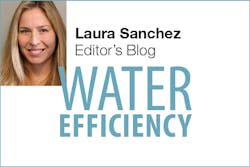Turning a Blind Eye: Sea Rise and the Air Force’s Billion-Dollar Project
The Space Fence, a sophisticated surveillance system designed to improve the way the US Air Force identifies and tracks objects in space, is under construction and scheduled for operation by 2018. The radar installation addresses the growing problem of space debris, an issue that became reality in 2009 when a Russian satellite smashed into a US satellite. But there’s one problem with this billion-dollar project: No one has taken into consideration the effects of global sea rise. And it’s being built on an island.
Construction is underway on Kwajalein Atoll in the Marshall Islands, halfway between Hawaii and Australia. The Marshall Islands rise only a few feet above the Pacific Ocean, leading scientists to believe that these atolls could be affected by rising seas within mere decades. According to the Air Force, Space Fence will function best near the equator. But it means the installation is being built just 10 feet above sea level.
The new equipment’s higher wave frequency will allow for the detection of smaller microsatellites and debris than current systems and will offer earlier detection of space events that could endanger GPS satellites or the International Space Station.
Dana Whalley, a civilian who is managing the Space Fence program said the military investigated environmental factors, including ocean flooding, in a 2014 site assessment before beginning construction. However, there seems to be no mention of climate change. The Associated Press reports that a single line in the report reads: “Based on historical data, there are no anticipated issues with ocean tide and/or wave flooding.”
The Associated Press also reports that neither the military nor the project’s contractor, Lockheed Martin, gave serious consideration to the threat of sea rise when choosing a site, despite warnings from environmental agencies. Bruce Schafhauser, Lockheed’s program director for the Space Fence, said the Air Force asked the company to design the system to withstand earthquakes but not rising seas.
Meanwhile, NASA clearly identifies the global pattern by charting satellite data on its website. It defines the rate of change as 3.4 mm per year.
The future “does not look good for a lot of these islands,” Curt Storlazzi told the Associated Press. Storlazzi is an oceanographer with the US Geological Survey who researches the submersion point of islands. According to his study, an island will no longer be able to sustain most plant or animal life when storms cause the sea to wash across it at least once a year. Storlazzi examined one island within Kwajalein Atoll and found that it will probably reach this point within decades, which means that the surrounding islands—including the Space Fence’s location—will face a similar fate.
Sea rise is an issue on the minds of many of us within the water industry as municipalities across the US face encroaching waters and struggle to make the necessary budgetary and operational shifts to accommodate this new climatological reality. How do you interpret the decision of a federal agency with access to global satellite data to spend a billion dollars without factoring in such a risk?
